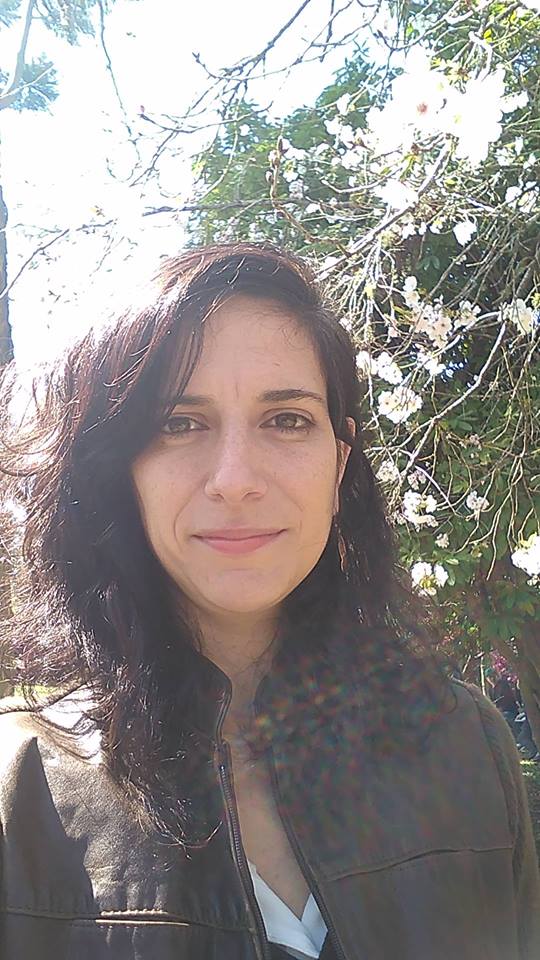Day 1 :
Keynote Forum
Constantinos Sioutas
University of Southern California, Department of Civil and Environmental Engineering, Los Angeles, California, USA
Keynote: Source apportionment of the total ambient organic carbon in the central Los Angeles over the 2005-2015 time period.
Time : 09:00-09:45

Biography:
Constantinos Sioutas completed his PhD in Environmental Engineering at Harvard University. He is the Fred Champion Professor and Professor of Civil and Environmental Engineering at University of Southern California. He has published more than 300 peer-reviewed papers in reputed journals.
Abstract:
One of the major drivers of ambient fine particulate matter (PM2.5) toxicity is organic carbon (OC) which can be emitted from multiple emission sources. In this study, thus, the main sources of total OC in the central Los Angeles (CELA) were determined over the 2005-2015 time period, using the positive matrix factorization (PMF) source apportionment model. This time period was specifically selected to evaluate the effects of implemented air quality legislations on the different contributing sources to the total OC concentrations during the study period. Concentrations of OC, elemental carbon, OC volatility fractions, ozone, sulfate, and several trace metals and elements were extracted employing the Chemical Speciation Network (CSN) database to be used in the model. Our results indicated three sources as major contributors to total OC: (i) vehicular (tailpipe) emissions, (ii) secondary organic aerosol, and (iii) non-tailpipe emissions. It was also observed that tailpipe emissions contribution to total OC has been decreased over the study period, most likely because of the new implemented regulations to limit the vehicular emissions in the area. In details, the 57% contribution of tailpipe emission to total OC in 2015 dropped to 43.4% and 49.6% in the time period of 2010-2015. In contrast, the relative contributions of secondary organic aerosol and non-tailpipe emissions, cumulatively, to total OC showed considerable increases over the study period. The findings of this study highlight the need for investigation of the non-tailpipe emissions, given the developed mitigation strategies for tailpipe emissions in the CELA over the recent years.
Keynote Forum
Maria Pilar Serbent
Santa Catarina State University, Ibirama, Brazil
Keynote: Diversity of prokaryotic and eukaryotic communities in an experimental rice planting with a history of pesticide use
Time : 09:45-10:30

Biography:
Maria Pilar Serbent has completed his PhD in Environmental Engineering at the age of 37 years from Regional University of Blumenau. She is the professor at Santa Catarina State University, Brazil. She has been serving as an editorial board member of repute.
Abstract:
Abundance and diversity of microbial communities in an experimental rice planting with a history of pesticide were determined using rRNA high-throughput sequencing from samples of the affluent, rice rhizosphere soil; storage pond sediment; and the effluent. A similarity between aquatic environments and terrestrial environments concerning the prokaryotic communities was observed. This pattern differs for eukaryotic communities, where there is a difference between the effluent (lower diversity indexes) and the other three sites (diversity indexes similar to those found in the sample). Proteobacteria overwhelmingly dominated the bacterial OTUs in the affluent, soil rhizosphere, and the storage pond sediment. Actinobacteria dominated in the effluent. At the genus level, the most frequent microorganism in both aquatic locals were an Actinomycetes from the family Sporichthyaceae followed by an OTU belonging to the Comamonadaceae family and Polynucleobacter (Proteobacteria). A Thaumarchaeota OTU (average 4.7%) and Geobacter (average 3.9%) were the most abundant genera in the rice rhizosphere and an Acidobacteria belonging to the candidate division DA052 (average 8.8 %), followed by a Thaumarchaeota OTU (average 6.5%) in the storage pond sediment. The rice rhizosphere and storage pond sediment would have better environmental quality due to the lower content of pesticides represented by the higher relative abundances of Acidobacteria, Nitrospirae, Gemmatimonadetes and Verrucomicrobia, and the lower values of Actinobacteria in comparison to the affluent and the effluent. Not only the structure of soil microbial populations but also those of aquatic environments would act as indicators of environmental quality concerning pesticide residues.
- Pollution
Location: Online
Session Introduction
BENJAMIN ANABARAONYE
BENJY POETRY AND MUSIC GLOBAL CONCEPTS
Title: THE PSYCHOLOGICAL BENEFITS OF POETRY AND ITS INNOVATIVE USE IN GREEN ENTREPRENEURSHIP IN AFRICA

Biography:
Benjamin Anabaraonye is the CEO of the BENJY POETRY AND MUSIC GLOBAL CONCEPTS, a company based in Nigeria whose goal is to spread joy and beauty to the community through inspirational poetry and music. He is an educator, researcher, author, poet, gifted blogger and the Director of the Project Green Initiative which exists to educate communities and institutions on climate change impacts, adaptation, and mitigation. In January 2016, he received the Green Champion Award from the United States Department of States for facilitating Understanding Climate Change. He has received trainings from United Nations Institute of Training and Research on human health and climate change. He also has a certification from Oxford University, Uk in the field Health and climate change. He has presented papers on climate change education, mitigation and adaptation at notable academic conferences in Nigeria. His abstracts and papers have been featured in International journals. Feel free to visit our educational blog: www.projectgreeninitiative.wordpress.com for our articles and poems on climate change adaptation and mitigation for global sustainability.
Abstract:
Poetry has always been associated with intensity of emotions expressed in literary form with a sense of rhythm and beauty. This study identifies poetry as a valuable tool which can be used in green entrepreneurship for sustainability and environmental safety in Africa. It also identifies poetry as a valuable tool which can be used in climate change education across various communities, cities, and countries in Africa. Climate change is one of the global issues which we must of necessity tackle with urgency in order to prevent a global warming too unbearable for the survival of mankind. The objective of this paper is to highlight the health, economic and psychological benefits of poetry on individuals, communities and institutions in Africa and beyond. It further highlights how poetry can be used innovatively in climate change education in Africa to achieve the sustainable development goals. Through literature and participant observation, it has been discovered there is an urgent need to educate our communities and institutions about the impacts of climate change and ways to adapt and mitigate for global sustainability. This paper is therefore very significant as it explores new opportunities, practices and policies in the innovative use of poetry for climate change education and enhancing sustainability and environmental safety in Africa.
Dr.Dilhani de Silva
Independent researcher
Title: Role of plant rhizosphere during indoor volatile organic compound remediation by plants

Biography:
Dilhani de Silva has recently completed her PhD from Staffordshire University, MSc study from the University of Wolverhampton. During her PhD, she studied the volatile organic compounds remediation by indoor plant species by employing techniques in Molecular Biology, Microbiology, Chemistry and Bioinformatics. During her MSc research, she studied biofilm formation and antimicrobial susceptibility of Salmonella typhimurium on food processing surfaces. Currently, she works as an independent researcher in the field of air pollution. She has more than 10 conference publications in national and international conferences.
Abstract:
A wide range of volatile organic compounds (VOC) are released from building materials, household products and human activities. These have the potential to reduce indoor air quality (IAQ), poor IAQ remains a serious threat to human health. Whilst the ability of the single plant species to remove VOC from the air through a process called phytoremediation is widely recognised, little evidence is available for the value of mixed plant species (i.e. plant communities) in this respect. The work reported herein explored the potential of plant communities to remove the three most dominant VOCs: benzene, toluene and m-xylene (BTX) from indoor air. During phytoremediation, bacteria in the root zone (rhizosphere) of plants are considered the principal site contributing to the VOC reduction. This project explored BTX degrading bacteria in the rhizosphere through culture-dependent and independent approaches.
Some bacteria in the rhizosphere utilised gaseous BTX as their sole carbon and energy sources were isolated on minimal salt agar. The majority of isolated bacteria were Gram-positive and belonged to the phylum Actinobacteria. Most of the identified bacteria belonged to the genera Microbacterium, Rhodococcus, Arthrobacter and Pseudomonas. In considering the impact of BTX upon the hizosphere microbiome, it was shown that overall there were little compositional and functional changes following exposure to 10 ppm gaseous benzene. Findings from this work enhanced our understanding of the benefit of indoor plants in relation to VOC remediation and the consequent improvement of phytoremediation systems for the protection of public health.
Hamid Sonia
Faculty of Nature, Life and the Earth Sciences, Akli Mohand Oulhadj University, Bouira, Algeria
Title: CULTURE TEST OF A LOCAL FUNGAL STRAIN ON OLIVE-POMACE

Biography:
Faculty of Nature, Life and the Earth Sciences, Akli Mohand Oulhadj University, Bouira, Algeria
Abstract:
In this work we have tried to valorize by biotechnological means a sub-product of olive cultivation; olive pomace from the oil mill of Bejaia (Sidi Aiche) using it as fermentation substrate in the production of an entomopthogenic fungal biomass. A physico-chemical and microbiological characterization was conducted on this olive residue.
The results of the olive pomace physicochemical analysis show fairly variable rates, which are estimated at 91%, 5.4% and 1.54% respectively for dry matter, ashes and soluble sugars. Low cellulose content was recorded in the order of 18%. With a slightly acid pH= hydrogen potential (6.02), the pomace will provide a medium for the development of fungal strains.
Conducting the solid-state fermentation of B.bassiana on the olive-pomace substrate matrix as energy and carbon sources, in order to produce a biomass of Beauveria bassiana, yielded encouraging results (biomass production of 1.2 x 108 spores / ml), accompanied by a variation in pH and degradation rates of the appropriate cellulosic compounds and soluble sugars.
